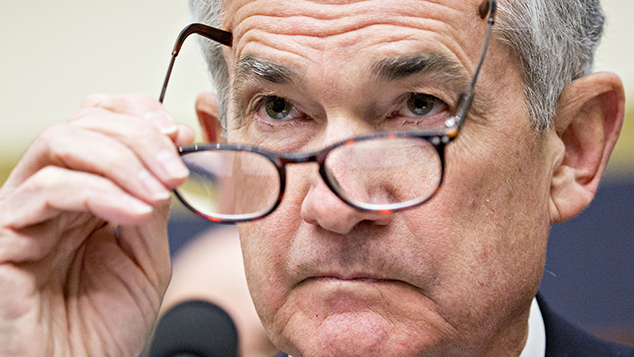
No more Mr Nice Guy.
Jerome Powell, Janet Yellen’s replacement as governor of the US Federal Reserve , had a little word with markets earlier this week.
They didn’t like it.
In essence, Powell gave the impression that he couldn’t care less about the mini-tantrum that markets had thrown a few weeks ago.
Indeed, he reckons the economy is going great guns and that inflation is something he’s keen to contain.
As a result, investors are now worried that three more interest rate rises are the bare minimum that we’ll see from the Fed this year.
No wonder markets have tumbled this week.
The Powell put – not as comforting as Greenspan’s version
“The Powell put has a much lower strike price.”
That’s how Michael Hartnett at Bank of America Merrill Lynch (BoAML) reacted to new Federal Reserve boss Jerome Powell’s indicated stance on the markets. What does he mean by that?
“The Greenspan put” refers to the manner in which Fed governors since Alan Greenspan have had a tendency to intervene with soothing words or even interest rate cuts when markets get even a little bit jittery.
A put option gives the holder the right to sell an asset at a specific price (the “strike price”) to the writer of the option. It’s the sort of thing you might buy as a form of insurance against a drop in the markets. It protects you from worrying about the effect on your portfolio because you know that even if markets fall below a certain level, you’ll be OK.
Hence “the Greenspan put” – the idea that after a certain drop in markets, the Fed will step in to get your back.
This, some argue – and I’m very much one of them – creates epic levels of moral hazard. In other words, the idea that losses are in some way insured against, encourages more risk taking than would otherwise happen if the risk takers had to bear the brunt of the losses.
This can sound a bit theoretical to some people. But in 2007, researchers Russell Sobel and Todd Nesbit put the theory to the test in a very different context, as Andrew Lo notes in his book, Adaptive Markets.
The pair studied the effect of introducing new safety measures into NASCAR vehicles in the US. The goal of each driver in these NASCAR races (as you’d imagine) is to reach the finish line before everyone else. So, not unlike financial market participants, they have a good incentive to take as much risk as they can possibly bear.
So, in theory, if you introduce a new safety measure, the drivers will offset the benefits to be had by driving more recklessly. And as Lo notes, that’s just what happened. The pair found that “every time a new safety device was introduced, the number of accidents actually increased.”
That’s moral hazard in action. And I would argue that the fact that the Fed has effectively put a floor under markets for so long has been a major factor in blowing up the various bubbles we’ve seen over the past few decades. If financial market players believe that the coin toss is weighted to landing on heads more often than tails, then it creates a strong incentive to bet the house on heads.
So when BoAML talks about the “Powell put” having a lower strike price, what they mean is that it looks as though the new Fed boss would allow the market to fall a lot further before any form of insurance kicked in.
No wonder markets have sagged. This is potentially big news – assuming it’s true.
Watch wages to find out if Powell is really as tough as he sounds
Powell could be talking a big game right now. He has the space to do it, after all. Managing expectations is a key part of being a good central banker (it’s a key part of pretty much any job, thinking about it).
So it makes sense to come in hard. Acclimatise the markets to the idea of a less forgiving Fed. Then, if there really is a panic to deal with later, you only need to soften your tone – rather than head straight for the printing presses – to calm them down.
This is the easy part for Powell. What we really need to watch now is the economic data, the problems that poses for him, and how he navigates them.
One of the key things to watch this week will be next Friday’s US jobs data – or more specifically, the wage data. Last month’s 2.9% rise in wages was arguably what triggered the surge in bond yields and the rocketing volatility.
If that wage strength is confirmed, markets could take it badly. If it looks as though it was a one-off, they’ll be happier – for now.
But it seems clear we’ve reached a turning point of sorts. The days when the future held nothing but lower interest rates are gone. And one way or another, that’s going to have a major impact on markets. There’s no way that it can’t.
In the latest edition of MoneyWeek magazine, out tomorrow, I talk about the end of the bond bull market and what it could mean for your investments. The bond bull market has effectively been the single most important trend in markets for the last 35 years.
So I’m not exaggerating when I say that its demise could be the most important market event any of us have seen in our investing careers. That’s why we’ll be paying very close attention to what happens in the coming months, years and – if previous long-term bond shifts are any guide – decades.
In short, if you’re not already a subscriber, now’s a very good time to sign up – before it all gets messy.